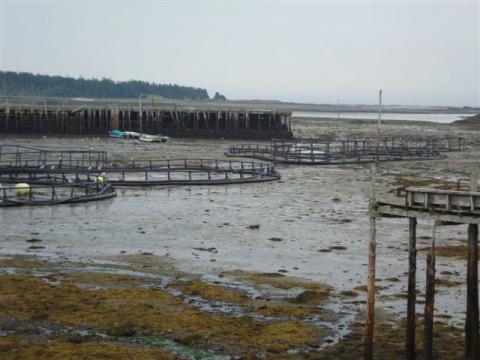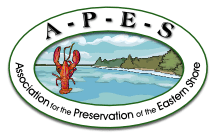You are here
Belliveau Approves New Feedlots

The province of Nova Scotia announced the approval of two new aquaculture feedlots in Shelburne on Tuesday, 18 Dec 2012. Did the government wait until the busy Christmas season, when the legislature isn’t sitting and lobster fishermen are out tending their traps, to make its announcement??
“Within minutes of the government news release announcing Fisheries and Aquaculture minister Sterling Belliveau's approval Tuesday of two large salmon farms in Jordan Bay, near Shelburne, community groups, scientists and others voiced their strong opposition to the decision.
"For this project to provide the benefits the government propjects," says Mayday Shelburne County spokesperson Sinday Horncastle, "there would have to be a different business model."
She says that the Jordan Bay sites lies between Shelburne Harbour and Port Mouton Bay, two locations which have failed to support industrial open-net aquaculture without damaging the surrounding habitat. "Jordan Bay is simply too shallow to support these large farms."
“While the government may claim that the Jordan Bay sites were put through a rigorous review process, what was not put through the same rigorous process was the province’s record on monitoring and enforcing their own environmental guidelines for open net pen salmon farms”, said Inka Milewski, science advisor for the Conservation Council of New Brunswick.
Milewski is the lead researcher on a study being done in Shelburne Harbour to document the recovery of the sea bottom after a fish farm has been abandoned. Her results, to be released in late January, show that the sea bottom at the former Sandy Point salmon farm in Shelburne Harbour remains grossly polluted one year after fish farming has ceased. Milewski said the terms grossly polluted and polluted are used in a DFO Expert Opinion report (2006/001) to classify the state of the sea bottom due to organic loading.”
“Within minutes of the government news release announcing Fisheries and Aquaculture minister Sterling Belliveau's approval Tuesday of two large salmon farms in Jordan Bay, near Shelburne, community groups, scientists and others voiced their strong opposition to the decision.
"For this project to provide the benefits the government propjects," says Mayday Shelburne County spokesperson Sinday Horncastle, "there would have to be a different business model."
She says that the Jordan Bay sites lies between Shelburne Harbour and Port Mouton Bay, two locations which have failed to support industrial open-net aquaculture without damaging the surrounding habitat. "Jordan Bay is simply too shallow to support these large farms."
“While the government may claim that the Jordan Bay sites were put through a rigorous review process, what was not put through the same rigorous process was the province’s record on monitoring and enforcing their own environmental guidelines for open net pen salmon farms”, said Inka Milewski, science advisor for the Conservation Council of New Brunswick.
Milewski is the lead researcher on a study being done in Shelburne Harbour to document the recovery of the sea bottom after a fish farm has been abandoned. Her results, to be released in late January, show that the sea bottom at the former Sandy Point salmon farm in Shelburne Harbour remains grossly polluted one year after fish farming has ceased. Milewski said the terms grossly polluted and polluted are used in a DFO Expert Opinion report (2006/001) to classify the state of the sea bottom due to organic loading.”
“Within minutes of the government news release announcing Fisheries and Aquaculture minister Sterling Belliveau's approval Tuesday of two large salmon farms in Jordan Bay, near Shelburne, community groups, scientists and others voiced their strong opposition to the decision.
"For this project to provide the benefits the government propjects," says Mayday Shelburne County spokesperson Sinday Horncastle, "there would have to be a different business model."
She says that the Jordan Bay sites lies between Shelburne Harbour and Port Mouton Bay, two locations which have failed to support industrial open-net aquaculture without damaging the surrounding habitat. "Jordan Bay is simply too shallow to support these large farms."
“While the government may claim that the Jordan Bay sites were put through a rigorous review process, what was not put through the same rigorous process was the province’s record on monitoring and enforcing their own environmental guidelines for open net pen salmon farms”, said Inka Milewski, science advisor for the Conservation Council of New Brunswick.
Milewski is the lead researcher on a study being done in Shelburne Harbour to document the recovery of the sea bottom after a fish farm has been abandoned. Her results, to be released in late January, show that the sea bottom at the former Sandy Point salmon farm in Shelburne Harbour remains grossly polluted one year after fish farming has ceased. Milewski said the terms grossly polluted and polluted are used in a DFO Expert Opinion report (2006/001) to classify the state of the sea bottom due to organic loading.”
Copyright APES 2012 Website by Ionsign Online

